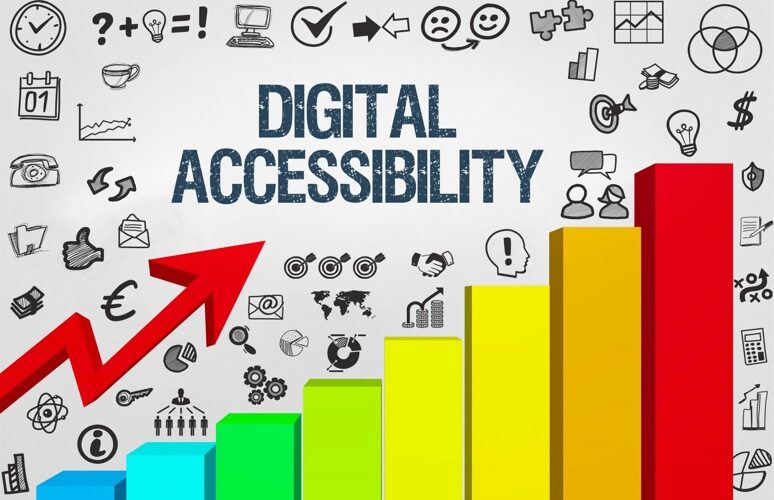Why is Digital Accessibility Important?
Over the years, the world has become increasingly reliant on digital technology. Nowadays, online services and resources are used in almost every aspect that we do.
Whether it is used for:
- Online shopping.
- Performing a quick Google search.
- Checking bank balances or paying bills.
- Socialising.
- Watching the latest blockbusting show.
- Accessing important information about local council services.
Digital technology has a big part to play in our everyday lives.
Why is digital accessibility important?
We all like to interact with online services differently in this modern day. For example, some people like to have captions on when watching a programme, or you may need to zoom into a page to view certain aspects. If you came across a site that doesn’t provide these kinds of features, it would be a real frustration.
For disabled people who face these barriers, it can prevent them from accessing or interacting with a platform altogether. Leaving them shut out from their human rights and stripped of their independence.
Imagine:
- Watching a video with no sound or captions available. How would you understand its context?
- Being blind and using a screen reader to navigate through a site and all the links just read out ‘click here’. How would you get to the web page that you required?
- You can’t use a mouse and rely on a keyboard to access a web page. You have X amount of days to complete a form or an important household contract runs out. However, the site you are on won’t let you skip past the main menu to access the content. What would you do?
These are just a few examples, out of a very long list of obstacles, that disabled people come across daily online.
Why we all may need to rely on digital accessibility at some point
1-in-5 people in the UK need online products and services to be accessible due to a disability. However, there is a vast amount more who are also prevented from accessing these important resources. This is due to temporary or situational limitations leading them to requiring online assistance.
Microsoft’s Inclusive Design Manual image below displays the difference between permanent, temporary, and situational disabilities. This really gets you thinking about how digital accessibility may assist every one of us at some point in our lives.
There’s also the ageing process that we sadly can’t avoid. Over time, we may all need some assistance when online due to our vision, hearing, and mobility deteriorating. By creating accessible sites and applications, we can ensure that our ageing population (and our future selves) aren’t excluded from accessing online information and resources.
Small changes that can make a big impact for online your users
There are standards called Web Content Accessibility Guidelines (WCAG) that can steer you on your way to achieving accessibility.
You can make a few simple solutions today that can enhance your users experience when on your websites. Include:
- Captions and transcripts on video files.
- Descriptive alternative text on imagery.
- Keyboard-only accessibility.
- Context, by being as descriptive as possible on all site elements.
- Alternative formats.
- User-friendly content and consistent layouts.
Who is responsible for implementing digital accessibility?
All of us are responsible for making inclusive adjustments. No matter your position within an organisation, there is always something that will fall within your remit that can help to enhance your online audience.
Whether you are a:
- Designer
- Developer
- Communications, marketing, or social media expert
- Administrator
- Equality, Diversity and Inclusion specialist
- Manager or in a senior position looking at putting a business case together
We can all work jointly to create an accessible online community.
There is a great range of training available to upskill varying departments. Giving your team the confidence that they are making the right decisions with online content. Even courses that train you how to audit test your own content and site structure!
How accessibility benefits your organisation
By improving your site’s accessibility, you’ll be putting your users at the forefront of your platforms. Helping to give independence and demonstrate that you’re an organisation that prioritises and cares about inclusion.
In return, you’ll be rewarded with a loyal customer following with enhanced engagement. Gaining greater search engine rankings, higher website traffic, and a great reputation to boast about.
Recommended next steps to aid with the accessibility of your website
Digital accessibility specialists Hex Productions recommend taking a free website accessibility health check across your platforms. Alternatively, undertake a full manual accessibility audit to assess your user experience with a pan-disabled team of assessors.
